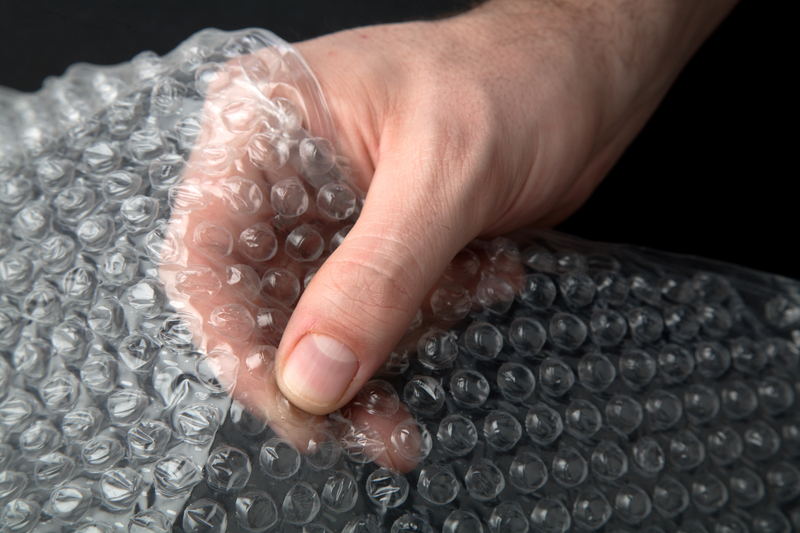How to Properly Prepare and Store a Freezer When Not Using It
Freezers are a cornerstone of many households and businesses, helping to keep perishable items safe and fresh for long periods. But what happens when you need to stop using your freezer temporarily? Whether you're moving, remodeling, or simply don't need extra freezer space for a season, it's crucial to know how to prepare and store a freezer when not using it. Taking the right steps can help you avoid costly repairs, unwanted odors, and even health hazards. In this comprehensive guide, we'll walk you through everything you need to know to safely shut down and store your freezer.
Why Is Freezer Storage Preparation Important?
Many people think they can simply unplug their freezer and forget about it. However, incorrect storage can lead to problems such as mold growth, foul odors, mechanical issues, and even rodent infestations. By learning the proper way to prepare a freezer for storage, you can protect your appliance and ensure it is ready for use when you need it again.
- Prevents mold and mildew buildup
- Avoids persistent bad smells
- Reduces risk of freezer malfunction
- Protects against pests
- Extends the lifespan of your appliance

Step-by-Step: Preparing Your Freezer for Storage
Step 1: Plan Ahead
Before you begin, choose the right time to prepare your freezer for storage. Ideally, finish or relocate all frozen goods so you're dealing with an empty appliance. If you're moving or storing multiple appliances, consider enlisting help and preparing cleaning supplies in advance.
Step 2: Remove All Contents
The first and most vital step in preparing your freezer for storage is to remove all the food items. Even small amounts of leftover food can cause unpleasant odors and attract pests. Place any salvageable foods in another freezer or cooler, and safely dispose of expired or spoiled items.
- Sort through all shelves, baskets, and compartments.
- Check crevices for forgotten food items.
Step 3: Unplug and Defrost the Freezer
Never store a freezer while it's still plugged in or partially operational. Turn off the appliance and unplug it from the socket. If your unit has a built-in water line or ice maker, disconnect these as well.
Next, it's time to defrost your freezer before storing it. Even frost-free models can accumulate moisture that needs to be air dried.
- Open the door and let the freezer come to room temperature.
- Place towels around the base to catch excess water as the ice melts.
- Speed up the process by placing bowls of hot water inside the freezer, leaving the door open.
- Do not use sharp or metallic objects to chip away ice--this could damage the interior.
Patience is important here; allow all ice to melt and water to drain thoroughly.
Step 4: Deep Clean the Interior and Exterior
Once fully defrosted, give your freezer a thorough cleaning. Cleanliness is crucial in preventing mold, mildew, and bad odors during storage.
- Mix a solution of warm water and mild dish soap or white vinegar (a natural deodorizer and disinfectant).
- Using a soft sponge or cloth, wipe all interior walls, drawers, and shelves.
- Don't forget to clean the door gasket, as grime can collect in the seals.
- Rinse with a fresh damp cloth and dry thoroughly with a towel.
- Wash the exterior, including under and behind the appliance. Use a vacuum or brush to gently clean the coils if accessible.
Tip: For stubborn odors, sprinkle baking soda inside the freezer and let it sit for several hours before vacuuming or wiping it away.
Step 5: Dry Thoroughly
Moisture is the enemy when it comes to storing a freezer for extended periods. After cleaning, open the freezer door and allow the interior to air dry completely. This may take several hours or even overnight.
Avoid re-closing the freezer too quickly, as trapped moisture can lead to mold and mildew.
Step 6: Prepare the Freezer for Storage
Now your freezer is clean and dry, take the following steps to store your appliance safely until you need it again:
- Remove or secure all shelves and drawers to prevent rattling or breakage.
- Leave the door ajar about an inch to allow for air circulation. This step is vital to prevent odors and mold growth.
- Use a bungee cord or tape to keep the door propped open without stressing the hinges.
- Place a box of baking soda or moisture absorber inside the freezer to control humidity and odors during storage.
- Cover the unit loosely with a breathable fabric sheet or old blanket to keep dust off, but do not use plastic tarps as they can trap moisture.
Label the freezer as "EMPTY & CLEAN" if storing in a shared or public area to prevent accidental use.
Step 7: Choose the Best Storage Location
Location is as important as preparation when it comes to storing a freezer properly. Whenever possible:
- Store upright rather than on its side or back to protect the compressor.
- Pick a cool, dry, and well-ventilated spot out of direct sunlight.
- Garages, basements, or storage units can work, but avoid unheated or wet environments that can cause rust or electrical issues.
- Keep the freezer raised slightly off the floor with a pallet or bricks to improve airflow and deter pests.
- Don't cover ventilation grids.
Common Mistakes in Freezer Storage (And How to Avoid Them)
- Failing to fully defrost or dry the freezer before storage, leading to mold and odor problems.
- Leaving the door completely closed, which can result in a musty smell and difficult-to-remove mildew.
- Storing in damp or unprotected environments that encourage rust or electrical damage.
- Forgetting to clean under the appliance or to secure loose shelving.
- Using strong chemicals instead of safe cleaning products, which can harm the interior lining or leave toxic residues.
Avoid these errors by following the steps detailed above, and you'll keep your freezer in optimal condition for future use.
How to Recommission a Freezer After Storage
When you're ready to use your stored freezer again, follow these simple steps to ensure a smooth transition:
- Inspect the compressor and power cord for any signs of wear, rust, or damage.
- Wipe down the interior and exterior to remove dust and any residual baking soda.
- Close the door fully and plug in the freezer. Allow it to cool to the desired temperature before loading any food.
- Restock gradually, never overfilling to allow proper air circulation.
If you notice any strange noises or persistent odors, troubleshooting may be required before using the freezer for food storage.
Special Tips for Chest Freezers, Upright Freezers, and Mini Freezers
While the basic principles of freezer preparation and storage are the same, a few unique concerns arise depending on the appliance model:
Chest Freezers
- More susceptible to moisture collection at the base; be sure to dry them thoroughly.
- Secure lids slightly ajar if possible, using spacers or bungee cords.
Upright Freezers
- Balance doors so they don't swing open unexpectedly in storage.
- Remove shelving if removable to minimize breakage.
Mini Freezers
- Clean all seals and vents thoroughly as small spaces can concentrate odors.
- Store upright to protect delicate components inside.
Long-Term vs. Short-Term Freezer Storage
Short-term: If your freezer will be unused for only a few weeks, you may choose to leave the power on and keep a few items inside. However, if storing for more than a month, it's safest to fully defrost, clean, and secure the freezer as described above.
Long-term: Always follow the complete process. Power surges, pests, and humidity changes over months can cause serious damage if the freezer isn't properly prepared.

Frequently Asked Questions About Storing Unused Freezers
Can I store a freezer outside?
Storing a freezer outdoors is not recommended unless it's specifically designed for outdoor use. Moisture, extreme temperatures, and pests can ruin the appliance quickly.
Should the freezer be left plugged in when in storage?
For safety, always unplug the appliance during storage. Only leave it running if it's in everyday use and being periodically checked.
Is it safe to lay a freezer on its back or side for storage?
Freestanding and upright are always preferred. Laying a freezer on its side or back can disrupt refrigerant oils in the compressor, potentially causing operational issues.
What if mold develops during storage?
Clean the freezer with a solution of baking soda and vinegar, or use a specialized appliance cleaner. Let it air out thoroughly before use.
How can I prevent pests from entering a stored freezer?
Ensure all food is removed, freezer is cleaned, and entry points (doors, hinges) are crack-free. Storing the appliance off the ground and in sheltered areas also discourages pests.
Conclusion: Maintain Your Investment with Proper Freezer Storage
Properly preparing and storing a freezer when it's not in use is a small investment of time that pays off enormously when you need your appliance again. From defrosting, deep cleaning, and drying to choosing an optimal storage location, each step protects your freezer and keeps it ready for future use.
By following these guidelines for freezer care during storage, you'll avoid the common problems of foul odors, mold, breakdowns, and pests. Remember: a clean, dry, and slightly open freezer is a happy freezer!
Whether you own a chest, upright, or mini freezer, use these tips to extend the life, functionality, and freshness of your appliance--even during long periods of non-use.
If you have any additional queries on preparing and storing your freezer or need professional assistance, don't hesitate to contact an appliance expert. Your freezer will thank you!



